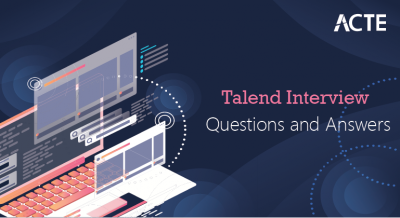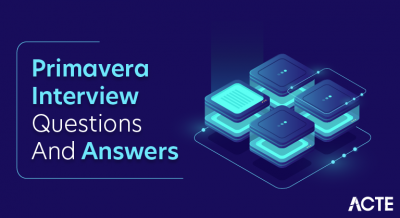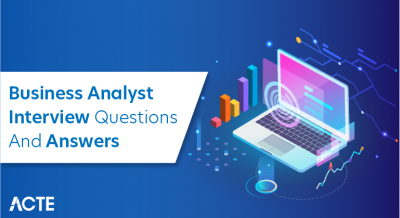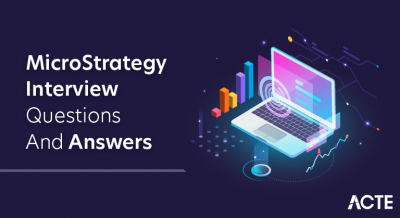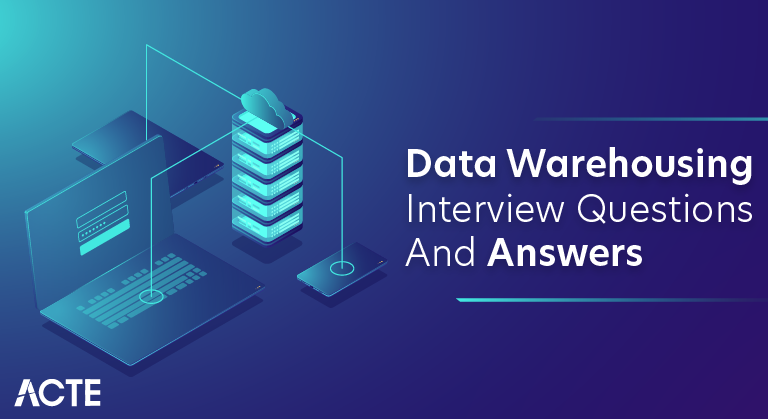
These Product owner Interview Questions have been designed specially to get you acquainted with the nature of questions you may encounter during your interview for the subject of Product owner As per my experience good interviewers hardly plan to ask any particular question during your interview, normally questions start with some basic concept of the subject and later they continue based on further discussion and what you answer.we are going to cover top 100 Product owner Interview questions along with their detailed answers. We will be covering Product owner scenario based interview questions, Product owner interview questions for freshers as well as Product owner interview questions and answers for experienced.
1. What is the Agile Manifesto, and how does it guide your work as a Product Owner?
Ans:
The Agile Manifesto is a foundational document in Agile software development, emphasizing values like individuals and interactions, working software, customer collaboration, and responding to change. As a Product Owner, it guides me to prioritize collaboration, customer satisfaction, and adaptability in the development process.
2. How do you handle changing requirements in Agile projects?
Ans:
In Agile, I embrace changing requirements as they provide opportunities to deliver more value. I maintain open communication with stakeholders, regularly review and adjust the product backlog, and prioritize changes based on business value. Flexibility and responsiveness are key in managing changing requirements.
3. Can you explain the difference between the Scrum framework and the Kanban framework?
Ans:
| Scrum Framework | Kanban Framework | |
| Iterative and incremental development methodology. |
Visualizes work on a Kanban board with continuous flow. |
|
| Roles include Scrum Master, Product Owner, and Team. | No predefined roles; emphasis on collaboration. | |
| Time-boxed iterations known as Sprints. | No fixed iterations; work progresses continuously. | |
| Work is organized in a backlog and planned for Sprints. | No fixed planning; work is pulled as capacity allows. | |
| Emphasizes delivering a potentially shippable product. | Focuses on continuous delivery and minimizing lead time. |
4. How do you maintain communication and collaboration between development team and stakeholders?
Ans:
I foster communication through regular ceremonies like sprint planning, reviews, and daily stand-ups. Additionally, I use collaboration tools, maintain an up-to-date product backlog, and encourage an open-door policy. Regular feedback loops and transparency contribute to effective communication and collaboration.
5. Describe a situation where you had to make a tough prioritization decision and how did you approach it?
Ans:
In a scenario where resources were limited, and conflicting priorities emerged, I applied the MoSCoW method to categorize must-haves, should-haves, could-haves, and won’t-haves. I collaborated with stakeholders, considered business impact, and made the decision transparently, ensuring alignment with strategic goals.
6. What is a user story, and how do you write effective user stories?
Ans:
A user story is a concise, user-focused description of a feature, written from an end-user perspective. To write effective user stories, I follow the INVEST criteria: Independent, Negotiable, Valuable, Estimable, Small, and Testable. I engage stakeholders, prioritize based on value, and include acceptance criteria for clear understanding by the development team. This ensures a shared understanding of requirements.
7. How do you ensure that the product backlog is transparent and understood by all team members?
Ans:
Ensuring transparency and understanding of the product backlog among all team members involves several key strategies. Regular backlog refinement sessions are conducted to discuss and clarify items. Clear communication and prioritization of backlog items help set expectations. Encouraging open communication within the team and addressing questions promptly fosters a collaborative environment, ensuring that everyone comprehends the product backlog.
8. What is the Definition of Done, and why is it important in Agile development?
Ans:
The Definition of Done (DoD) outlines the criteria that must be met for a user story to be considered complete. It includes coding standards, testing, documentation, and any other relevant criteria. The DoD is crucial in Agile as it sets a clear standard for what “done” means, ensuring that the team delivers a fully functional, quality product increment at the end of each sprint.
9. How do you gather and incorporate feedback from end-users into the product development process?
Ans:
I employ various strategies to gather end-user feedback, such as surveys, usability testing, and customer interviews. Regularly engaging with users during product demonstrations and incorporating feedback into backlog refinement sessions ensures their perspectives are considered. This iterative feedback loop helps in making informed decisions and delivering a product that better meets user needs and expectations.
10. Explain the concept of Minimum Viable Product (MVP) and its importance in Agile development.
Ans:
The Minimum Viable Product (MVP) is the most basic version of a product that includes essential features to address the core needs of early adopters. It allows for rapid delivery to the market, gathering valuable feedback and minimizing development time and resources. In Agile development, the MVP concept emphasizes prioritizing features that deliver maximum value to users and stakeholders
11. How do you deal with conflicting priorities from different stakeholders?
Ans:
Addressing conflicting priorities involves effective communication and negotiation. I facilitate discussions to understand the underlying reasons for differing opinions, align priorities with business goals, and seek consensus. When necessary, I use prioritization frameworks, involve key stakeholders in the decision-making process, and transparently communicate the chosen direction to ensure everyone is on the same page.
12. Can you describe the role of a Product Owner in Sprint Planning?
Ans:
In Sprint Planning, the Product Owner plays a crucial role in collaborating with the development team. This includes presenting the prioritized product backlog items, providing context and clarifications on user stories, and answering questions from the team. The Product Owner works with the team to define the sprint goal and helps prioritize and select user stories for inclusion in the upcoming sprint, ensuring alignment with the overall product vision and objectives.
13. What metrics do you use to measure the success of a product?
Ans:
I use a combination of quantitative and qualitative metrics to assess product success. Key Performance Indicators (KPIs) may include customer satisfaction, user engagement, conversion rates, and revenue. I also consider metrics like time-to-market, release frequency, and feedback loop times. These metrics collectively provide insights into how well the product is meeting user needs and contributing to business goals.
14. How do you handle a situation where the development team cannot meet the committed sprint goals?
Ans:
In such situations, I prioritize open communication. I work closely with the team to understand the challenges, assess the impact on the overall project timeline, and collaboratively find solutions. This may involve reprioritizing work, adjusting scope, or identifying and addressing impediments. The focus is on learning from the experience to improve future planning and adaptability.
15. What is the role of a Product Owner in the Daily Standup (Scrum) or Daily Standup (Kanban)?
Ans:
The Product Owner participates as an active observer. The primary role is to listen to the progress made by the development team, address any queries they may have, and provide clarifications on user stories or acceptance criteria. The Product Owner may also share insights into changes in priorities or business needs. While the primary focus is on the development team, the Product Owner’s presence ensures alignment between the team’s daily work and the overall product vision and goals.
16. Explain the concept of story points,how do you estimate the effort required for a user story?
Ans:
Story points are a relative measure of effort or complexity used in Agile for estimating user stories. It’s a way to express the effort involved without assigning specific time values. Estimation is often done through planning poker or similar techniques, involving the development team. The team collectively assigns story points based on factors like complexity, uncertainty, and effort. This relative estimation helps in comparing and prioritizing user stories.
17. How do you incorporate customer feedback into the product backlog?
Ans:
Customer feedback is invaluable for product improvement. I regularly collect feedback through surveys, reviews, and direct interactions. Feedback is then analyzed, categorized, and prioritized based on its impact on user satisfaction and alignment with business goals. High-priority feedback is added to the product
backlog as user stories or tasks, ensuring that customer needs directly influence the product development roadmap.
18. What steps do you take to ensure that the product meets both user needs and business objectives?
Ans:
To ensure alignment between user needs and business objectives, I employ a collaborative approach. Regular communication with stakeholders, user interviews, and usability testing help in understanding user needs. I prioritize features based on user value, aligning them with business goals. Additionally, I use analytics and KPIs to measure how well the product meets user needs and contributes to overarching business objectives. This iterative process allows for continuous refinement and optimization.
19. How do you handle scope changes during a sprint or project?
Ans:
Scope changes are inevitable, and I approach them by assessing their impact on the project timeline, budget, and overall goals. If a change is critical, I collaborate with stakeholders to reprioritize the backlog, considering business value. For minor changes, I may incorporate them in the next sprint. Clear communication and transparency about the trade-offs are key to managing scope changes effectively.
20. Can you describe a successful product you’ve worked on and key factors that contribute to success?
Ans:
In a previous role, we launched a successful mobile app. Key factors contributing to its success included a thorough understanding of user needs through market research, regular feedback loops with users during development, a well-prioritized backlog focused on core features, and a cross-functional team that collaborated seamlessly. Continuous improvement based on analytics and user feedback post-launch also played a crucial role in sustaining its success.
21. How do you prioritize technical debt versus new features in the product backlog?
Ans:
Balancing technical debt and new features is crucial for long-term product health. I prioritize technical debt based on its impact on system stability, performance, and development efficiency. I weigh this against the urgency and business value of new features. In collaboration with the development team, I make informed decisions, ensuring that addressing technical debt doesn’t hinder the delivery of high-value features. Regularly revisiting and refining priorities is key to managing this balance effectively.
22. What is the role of a Product Owner in the Sprint Review and Sprint Retrospective?
Ans:
Sprint Review, the Product Owner plays a pivotal role in showcasing completed user stories to stakeholders. They present the progress made during the sprint, gather feedback, and engage in discussions with stakeholders about the product’s direction. Additionally, the Product Owner collaborates with the team to adapt the product backlog based on the insights gained during the review. In the Sprint Retrospective, the Product Owner actively participates in discussions with the development team. They contribute their perspective on what went well and areas for improvement, fostering a culture of continuous learning and enhancement within the team.
23. How do you ensure that the development team has a clear understanding of the user’s perspective?
Ans:
To ensure the development team has a clear understanding of the user’s perspective, I employ several strategies. Firstly, I provide detailed user stories with comprehensive context, goals, and acceptance criteria. These stories serve as a guide for the team to grasp user needs and expectations. Additionally, organizing user persona workshops helps team members empathize with end-users, providing insights into diverse perspectives. User journey mapping visually illustrates the entire user experience, enhancing the team’s comprehension.
24. How do you manage a stakeholder’s request for a feature that diverges from the product vision?
Ans:
In situations where a stakeholder requests a feature misaligned with the product vision, I prioritize open communication. I engage in discussions to understand their perspective while emphasizing the product vision and strategic goals. Collaboratively, I seek compromises or alternative solutions that better align with the overall product strategy, ensuring transparency about trade-offs and maintaining product coherence.
25. Explain the concept of a “Definition of Ready” for user stories.
Ans:
The “Definition of Ready” (DoR) outlines criteria a user story must meet before implementation. It includes a clear description, acceptance criteria, prioritization, and identification of dependencies. The DoR ensures that user stories are well-defined and ready for implementation, preventing misunderstandings and delays during sprints. It serves as a guideline for the Product Owner and the development team to maintain an efficient workflow.
26.How do you handle dependencies between different teams or projects in an Agile environment?
Ans:
Effectively managing dependencies in Agile involves proactive planning and communication. I facilitate regular meetings between teams to identify and address dependencies early, using tools like dependency boards. Collaboration ensures that teams are aware of each other’s timelines and potential roadblocks. By fostering a culture of openness and collaboration, I encourage teams to work together to resolve dependencies and maintain a seamless workflow across projects.
27. Describe a time when you had to adapt to changes in project priorities,how did you manage it?
Ans:
Adapting to changes in project priorities is a common occurrence in Agile. During such times, I swiftly assess the new priorities, considering their impact on the overall project. I engage with stakeholders to gather insights, reprioritize the backlog based on the revised goals, and communicate changes transparently to the team. This adaptability, coupled with effective communication and stakeholder engagement, ensures that the team remains aligned with evolving project objectives while maintaining a focus on delivering value.
28. How do you foster a collaborative culture within the development team and with stakeholders?
Ans:
Fostering a collaborative culture within the development team and with stakeholders involves creating an open and inclusive environment. I encourage regular team interactions through daily stand-ups and collaborative work sessions. Team-building activities and cross-functional training further strengthen relationships. With stakeholders, I prioritize transparent communication and involve them in the decision-making process, seeking their input and feedback. This collaborative approach builds trust, encourages innovation, and ensures everyone is aligned toward common goals.
29. What role do analytics and data play in your decision-making process as a Product Owner?
Ans:
Analytics and data play a pivotal role in my decision-making process as a Product Owner. I use quantitative data to gauge user engagement, track key performance indicators (KPIs), and measure the success of product features. Analytics help identify trends, user behaviors, and areas for improvement. Combining this quantitative data with qualitative insights from user feedback guides informed decision-making. By relying on data-driven insights, I ensure that product decisions align with user needs, business goals, and contribute to the continuous improvement of the product.
30. How do you ensure that the team delivers value in each iteration or sprint?
Ans:
Ensuring the team delivers value in each iteration or sprint involves meticulous backlog prioritization. I collaborate closely with stakeholders to define and prioritize user stories that align with business goals. Clear acceptance criteria and well-defined goals are established to guide development. Regular communication and feedback loops during sprint planning and reviews ensure that the team remains focused on delivering high-priority features. By fostering a culture of continuous improvement and adaptability, the team consistently delivers value in each iteration.
31. Can you explain the concept of Continuous Integration and its role in Agile development?
Ans:
Continuous Integration (CI) is a practice in Agile development that involves frequently integrating code changes into a shared repository. The primary goal is to detect and address integration issues early in the development process. Automated build and testing processes are triggered with each code commit, ensuring that the software remains in a consistent and deployable state. CI promotes collaboration among team members, reduces the risk of integration problems, and accelerates the development cycle. It aligns with Agile principles by supporting rapid and reliable delivery of software increments, contributing to a more efficient and collaborative development environment.
32. How do you handle a situation where a user story is not clear, and the team needs more information?
Ans:
In the face of an unclear user story, I initiate prompt discussions within the team, seeking additional details. Refinement meetings are organized for collaborative clarification, and, if needed, I engage stakeholders for further insights. Clear acceptance criteria are then updated to enhance the story’s clarity for effective implementation.
33. How do you effectively communicate the product roadmap to both internal and external stakeholders?
Ans:
Internally, I conduct regular meetings, leveraging visual aids like roadmaps and collaborative tools. Externally, I use newsletters, webinars, and stakeholder meetings to share the product roadmap. Tailoring the message to the audience ensures both internal and external stakeholders stay informed about the product’s direction and upcoming milestones.
34. How do you ensure that the product stays competitive in the market?
Ans:
To keep the product competitive, I stay updated on industry trends, prioritize features based on feedback, and monitor competitors. Adapting the product strategy to emerging needs and customer preferences ensures a sustained competitive advantage.
35. Can you describe a situation where you had to deal with a challenging stakeholder?
Ans:
In addressing a challenging stakeholder, I prioritized active listening, organized a focused meeting, and provided data-backed rationale for product decisions. Through effective communication and negotiation, we reached a consensus that aligned the stakeholder’s expectations with the overall product strategy.
36. How do you balance the need for innovation with the need for stability in a product?
Ans:
Balancing innovation and stability involves strategic planning, dedicating specific cycles for innovation while ensuring stable releases. User feedback and market trends guide the innovation path, aligning it with the overall product vision. Regular communication with the team and stakeholders is essential for maintaining equilibrium between introducing new features and ensuring product stability.
37. What techniques do you use to engage and involve stakeholders in the product development process?
Ans:
To engage stakeholders, I employ techniques such as regular meetings, workshops, and feedback sessions. I create opportunities for their input in backlog refinement, prioritize user stories based on their insights, and provide visibility into the development process. Open communication channels and stakeholder collaboration ensure their active involvement throughout the product development lifecycle.
38. How do you ensure that the team is working on the highest-priority items in the backlog?
Ans:
To ensure the team works on the highest-priority items, I maintain a well-prioritized backlog. Stakeholder collaboration and feedback help in refining priorities. Regular planning sessions, such as sprint planning, involve the team in selecting and committing to user stories based on business value. Continuous communication and backlog refinement sessions keep priorities aligned with strategic goals.
39. Describe a situation where you had to make a trade-off between time-to-market and product quality.
Ans:
In a scenario requiring a trade-off between time-to-market and product quality, I prioritized delivering a minimum viable product to meet a tight deadline. However, I ensured that essential quality standards were maintained, and any compromises were communicated transparently. Post-launch, I initiated continuous improvement processes to address any quality-related trade-offs, emphasizing a commitment to delivering a high-quality product in subsequent iteration
40. How do you handle a situation where the development team is not meeting the velocity?
Ans:
When the development team falls short of velocity or throughput expectations, I conduct a retrospective to identify challenges. Collaboratively, we discuss potential blockers, bottlenecks, or capacity issues. Adjustments are made to the sprint planning, and I work closely with the team to address impediments. Continuous improvement strategies are implemented to enhance performance and ensure alignment with expectations.
41. Explain the role of risk management in Agile product development.
Ans:
Risk management in Agile involves identifying, assessing, and mitigating potential risks throughout the product development lifecycle. It anticipates challenges and provides a proactive approach to addressing uncertainties. By regularly evaluating risks and adapting strategies, Agile teams minimize the impact of potential issues on the project, fostering adaptability and resilience.
42. How do you ensure that the team maintains a sustainable pace of work over the long term?
Ans:
Maintaining a sustainable pace involves a balanced approach to workload and team well-being. I prioritize realistic sprint planning by considering team capacity and potential bottlenecks. Regular retrospectives identify areas for improvement, and adjustments are made to avoid burnout. Encouraging open communication and respecting work-life balance contribute to a sustainable pace, promoting long-term productivity and team satisfaction.
43. What role does empathy play in your interactions with both the development team and stakeholders?
Ans:
Empathy is integral to team and stakeholder interactions. Understanding the team’s challenges fosters collaboration, while empathy with stakeholders builds trust and aligns decisions with their needs. Acknowledging diverse viewpoints creates a culture of mutual understanding, enhancing overall team dynamics.
44. How do you manage a stakeholder insisting on a particular solution rather than focusing on the problem?
Ans:
In cases of stakeholder insistence on a specific solution, I prioritize empathetic communication. Understanding their concerns, I guide discussions toward the underlying problem. By presenting alternative solutions and encouraging collaborative decision-making, I ensure alignment with both stakeholder expectations and the overall product strategy.
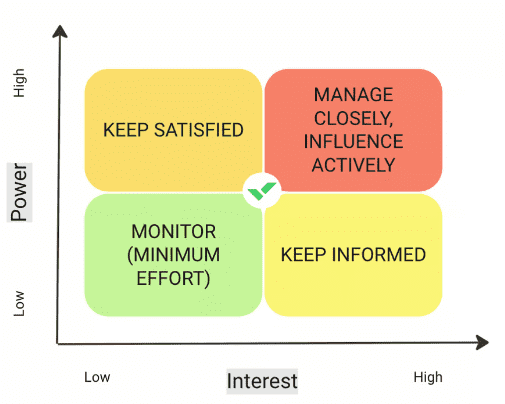
45. Describe a situation where you had to pivot the product strategy based on market feedback.
Ans:
In response to market feedback, I led a strategic pivot. Rapidly adapting to user needs, we adjusted the product strategy. This flexibility, guided by empathy for user experiences, resulted in a more responsive and successful product aligned with evolving market demands.
46. How do you ensure that the team maintains a focus on delivering value rather than just completing tasks?
Ans:
Maintaining a focus on delivering value is achieved by fostering a customer-centric mindset. Regular communication about overarching goals and the impact of tasks on end-users guides the team. During sprint planning, discussions emphasize the value of user stories, ensuring a collective understanding. Continuous feedback loops and a shared product vision drive decision-making aligned with delivering tangible value.
47. Can you provide an example of how you’ve used data-driven insights to make a product decision?
Ans:
In a product decision, I relied on data-driven insights. Analyzing user engagement metrics and feedback guided the choice. The data provided a clear understanding of user behavior, ensuring informed decision-making. This approach resulted in a product enhancement that directly addressed user needs and preferences.
48. How do you handle conflicting opinions within the development team on the best approach to a problem?
Ans:
Handling conflicting opinions within the development team, I encourage open communication. I facilitate discussions to understand different viewpoints and gather insights. Through collaboration, we weigh the pros and cons of each approach, seeking a consensus. By valuing diverse perspectives, we ensure that the team arrives at a well-informed decision, fostering a culture of shared ownership and continuous improvement.
49. What steps do you take to ensure that the team has a shared understanding of the product vision?
Ans:
To ensure a shared understanding of the product vision, I conduct regular alignment meetings. I provide clear documentation, including product roadmaps and vision statements. Collaborative workshops and training sessions are organized to discuss and reinforce the product goals. Regular communication, including updates on market trends, keeps the team engaged and ensures a collective focus on the product vision.
50.How do you stay updated on industry trends and emerging technologies that might impact your product?
Ans:
To stay informed about industry trends, I prioritize continuous learning. I regularly attend industry conferences, webinars, and workshops. Engaging in professional networks and forums facilitates knowledge exchange. Periodic market research, competitor analysis, and leveraging industry publications ensure that I am up-to-date on emerging technologies and trends that could impact the product.
51. How do you prioritize features in the product backlog?
Ans:
Prioritizing features involves a strategic approach. I use a combination of methods, including :
Value vs. Effort : Assessing the potential value a feature brings versus the effort required.
MoSCoW Method : Categorizing features as Must-haves, Should-haves, Could-haves, and Won’t-haves.
Customer Feedback : Considering direct user input and feedback to identify high-priority features.
Strategic Alignment : Aligning features with the overall product vision and business goals.
52. Describe a situation where you had to handle a critical bug affecting a live product?
Ans:
Facing a critical bug, I prioritize by assessing its impact on users and business. Swift action involves an immediate response, clear communication, and collaboration with the development team to implement a timely and effective solution.
53. What techniques do you use for effective user story mapping?
Ans:
For effective user story mapping, I organize collaborative workshops, ensuring the team’s collective input. We identify user personas, create user journey maps, and prioritize stories based on user needs. This visual representation enhances shared understanding and guides development priorities.
54. How do you handle scope creep during a project, and what strategies do you employ to manage it?
Ans:
In managing scope creep, I prioritize clear communication by regularly emphasizing project goals and scope boundaries to stakeholders. The implementation of a change control process ensures that scope changes are evaluated and approved systematically. Additionally, a focus on prioritization and maintaining detailed documentation of project requirements helps align scope adjustments with overall project objectives.
55. Can you explain the concept of a “Definition of Done” and how it evolves throughout the project?
Ans:
The Definition of Done (DoD) is a dynamic set of criteria for task completion, evolving throughout the project. This evolution is facilitated by regular collaboration with the development team, incorporating feedback from stakeholders and end-users, and continuous improvement based on retrospective insights. The evolving DoD serves as a quality standard, promoting transparency and accountability in the development process.
56. In what ways do you collaborate with UX/UI designers to ensure a seamless?
Ans:
Effective collaboration with UX/UI designers involves early involvement in project planning to align design concepts with goals. Conducting regular workshops ensures continuous synchronization between design and development efforts. Establishing feedback loops and maintaining open lines of communication facilitate a seamless integration of design principles, resulting in a user-friendly and cohesive product experience.
57. How do you manage communication challenges between a remote development team and stakeholders?
Ans:
Mitigating communication challenges with remote teams involves establishing scheduled overlaps, utilizing asynchronous tools, prioritizing clear documentation, and conducting regular video meetings. This ensures effective collaboration despite time zone differences.
58. What role does feedback play in your product development process?
Ans:
Feedback is central to product development, collected continuously from users and stakeholders. It drives iterative improvement, refining features and user experiences. Regular surveys complement ongoing feedback loops, providing structured insights that guide the product’s evolution.
59. Describe your approach to conducting sprint reviews and gathering valuable insights from stakeholders.
Ans:
In sprint reviews, I focus on :
Clear Objectives : Defining clear objectives for each review.
Stakeholder Involvement : Ensuring active participation of stakeholders.
Demonstrations : Conducting live demonstrations of completed user stories.
Feedback Gathering : Facilitating discussions to gather valuable insights and assess sprint goals.
60. How do you measure and improve team velocity over multiple sprints?
Ans:
Team velocity is measured by consistently calculating completed story points. Regular retrospectives identify influencing factors, and adjustments are made gradually for continuous improvement. Historical velocity trends inform realistic capacity adjustments, facilitating data-driven performance evaluation.
61. Explain the concept of a “Spike” in Agile development and when you might use it.
Ans:
In Agile, a “Spike” is a time-boxed research or investigation phase within a sprint to address uncertainties or explore solutions. It is used when a task’s complexity requires additional analysis before estimating effort accurately. Spikes provide a structured approach to handling unknowns and ensure better-informed decision-making during development.
62. How do you handle technical debt, and what strategies do you employ to manage it effectively?
Ans:
Handling technical debt involves :
Regular Assessment : Regularly assessing and acknowledging technical debt.
Prioritization : Prioritizing and scheduling debt repayment based on impact and urgency.
Refactoring Practices : Implementing refactoring practices to prevent accumulating new debt.
Team Education : Educating the team on the importance of addressing technical debt for long-term product health.
63. Describe your approach to conducting user acceptance testing (UAT)?
Ans:
For UAT, I prioritize clear test cases and collaborative testing, involving stakeholders in comprehensive feedback processes. Thorough documentation ensures a smooth transition, with meticulous planning and collaboration with the operations team to address unforeseen issues, ensuring a successful transition from development to production.
64. In a project deadline crisis, how do you decide on potential adjustments to scope or resources?
Ans:
Facing a project deadline risk involves assessing the impact of potential adjustments, transparent communication with stakeholders, prioritizing essential features, and exploring resource reallocation if needed. This strategic decision-making balances urgency with realistic expectations, ensuring a focused and effective response.
65. What methods do you use to gather and analyze customer feedback?
Ans:
Methods for gathering and analyzing customer feedback include surveys, user interviews, social media monitoring, and data analytics. This diverse approach ensures a comprehensive understanding of user preferences. Feedback guides product decisions by providing actionable insights, directing feature improvements, and aligning development with user expectations for optimal product outcomes.
66. Discuss a situation where you had to advocate for a feature that faced resistance from stakeholders?
Ans:
Advocating for a feature met with resistance, I leveraged a data-driven argument, providing evidence of its potential impact. Prototyping offered a tangible representation, while open dialogues and stakeholder collaboration addressed concerns and refined the feature based on feedback. Proposing an incremental implementation approach mitigated risks and demonstrated gradual benefits, fostering acceptance among stakeholders and the development team.
67. How do you approach integration of accessibility considerations in your product development process?
Ans:
Approach the integration of accessibility considerations by :
Early Involvement : Ensuring accessibility is considered from the project’s outset.
Guideline Compliance : Adhering to established accessibility guidelines and standards.
User Testing : Conducting usability testing with diverse user groups, including individuals with disabilities.
Continuous Education : Providing ongoing education to the development team on accessible design principles.
68. Explain the “Definition of Ready” for user stories and its role in streamlined sprint planning.
Ans:
The “Definition of Ready” (DoR) ensures user stories are comprehensive before development, minimizing uncertainties in sprint planning. It includes clear acceptance criteria, well-defined requirements, and stakeholder alignment, promoting effective collaboration and smoother development cycles.
69. How do you manage dependencies among multiple Agile teams working on different project components?
Ans:
Managing dependencies involves clear communication, regular mapping sessions, cross-team collaboration, mitigation plans, and sync meetings. This strategy ensures Agile teams collaboratively navigate and address dependencies, fostering an adaptive environment for cohesive project delivery.
70. How do you handle feature requests that come from different stakeholders with conflicting priorities?
Ans:
Effectively managing conflicting feature requests requires aligning stakeholders through dedicated meetings, carefully assessing each feature’s impact on project goals, employing a prioritization framework agreed upon with stakeholders, and transparently communicating prioritization decisions. This approach ensures collaborative decision-making and aligns feature development with the overarching objectives of the project, fostering a cohesive development process.
71.How did you handle sudden project requirement changes, and what adaptations did you make?
Ans:
Adapting to sudden changes involves swift assessment of impacts, transparent communication with stakeholders, Agile methodologies for flexible adjustments, and iterative planning to incorporate new requirements seamlessly. This adaptive approach ensures a smooth transition and maintains project momentum despite unexpected shifts, contributing to overall project resilience.
72. In a sprint, how does the Product Owner collaborate with the Scrum Master and development team?
Ans:
The Product Owner plays a pivotal role during the sprint, actively participating in backlog refinement, serving as a liaison between the development team and stakeholders, clearly defining acceptance criteria for user stories, and making informed decisions aligned with user needs and business goals. Collaborating with the Scrum Master and development team, the Product Owner ensures ongoing communication, addresses impediments, and fosters a shared understanding of sprint goals for effective product delivery.
73. How do you promote a culture of innovation and creativity in your development team?
Ans:
To foster innovation, I promote open communication, empower teams with autonomy, embrace diverse perspectives, conduct regular workshops, and recognize and celebrate innovative ideas. This approach creates an environment where team members feel inspired to contribute creative solutions, fostering a culture of innovation.
74. How do you handle risk in Agile projects and its impact on decision-making?
Ans:
In risk mitigation, I proactively identify risks through continuous monitoring and collaboration with the team. By incorporating risk management practices early in the process, I ensure timely responses to potential challenges, minimizing their impact on project goals.
75. Share your experience with A/B testing or other methods for validating product features with users.
Ans:
In product validation, I’ve utilized A/B testing and user feedback loops. A/B testing involves comparing two versions of a feature to measure user responses. This, coupled with direct user feedback, provides valuable insights for refining features, ensuring they align with user preferences and enhance overall product satisfaction.
76. In what ways do you ensure that the product remains compliant with relevant regulations and standards?
Ans:
To ensure regulatory compliance, I adopt a proactive approach by continuously monitoring relevant standards. Collaboration with legal and compliance teams, meticulous documentation, regular audits, and stakeholder education collectively contribute to maintaining adherence to regulations. This comprehensive strategy minimizes legal risks and ensures the product remains in compliance with industry standards.
77. Describe a scenario where you negotiated with stakeholders to reach consensus on project priorities.
Ans:
In negotiating with stakeholders on project priorities, I leverage :
Effective Communication : Clearly articulating project goals and constraints.
Data-Driven Arguments : Presenting data supporting prioritization decisions.
Compromise Solutions : Proposing compromise solutions that address stakeholders’ concerns.
Prioritization Frameworks : Utilizing prioritization frameworks agreed upon with stakeholders.
78. Explain how “Just-In-Time” requirements in Agile contribute to flexibility in development.
Ans:
“Just-In-Time” requirements in Agile involve :
Delaying Detailing : Deferring detailed requirements until they are essential.
Adaptive Planning : Allowing flexibility to adjust requirements based on evolving needs.
Lean Documentation : Minimizing upfront documentation, focusing on immediate needs.
Responsive Development : Ensuring responsiveness to changing user demands during development.
79. How do you foster a sense of ownership and accountability within the development team?
Ans:
To instill ownership and accountability, I set clear expectations, empower team members with autonomy, recognize achievements, and encourage open communication. This approach cultivates a culture of responsibility, where team members take ownership of their work and contribute proactively to the collective success of the development team.
80. In an Agile setting,how do you balance achieving technical excellence with pressure to deliver quickly?
Ans:
Balancing technical excellence with Agile speed requires a commitment to incremental improvements, involving the team in collaborative decision-making, and implementing regular refactoring practices. Adhering to Agile principles ensures a dynamic development environment where continuous improvement aligns with the need for rapid delivery.
81. Share a situation where you resolved a conflict within the development team and describe your approach.
Ans:
In a conflict resolution scenario, I facilitated open communication, allowing team members to express concerns. Employing active listening, I identified root causes, proposed compromise solutions, and fostered a shared understanding. This approach promoted team cohesion and led to a constructive resolution, maintaining a positive and collaborative development environment.
82. What strategies do you use to keep the team motivated and engaged during long development cycles?
Ans:
To keep the team motivated during extended development cycles, I employ :
Recognition and Appreciation : Regularly acknowledging individual and team accomplishments.
Rotational Responsibilities : Introducing variety in tasks and responsibilities to prevent monotony.
Goal Alignment : Aligning team goals with the overall project vision for a sense of purpose.
Frequent Check-Ins : Conducting regular check-ins to assess well-being and address concerns promptly.
83. How do you stay updated on emerging technologies and industry trends that might impact your product?
Ans:
To stay informed, I foster a culture of continuous learning, attend industry conferences, actively network, and subscribe to relevant publications. This ensures the team remains abreast of emerging technologies, enabling informed decisions in product development.
84. Share a retrospective improvement example that significantly improved the team’s efficiency.
Ans:
In a retrospective, the team identified the need for improved collaboration tools. Implementing a modernized communication platform significantly enhanced efficiency, enabling seamless collaboration and reducing communication gaps. This improvement positively impacted team dynamics and overall productivity.
85. How do you handle knowledge gaps when introducing new technologies or methodologies to the team?
Ans:
When addressing knowledge gaps, I facilitate :
Training Sessions : Organizing training sessions or workshops to impart necessary skills.
Pair Programming : Encouraging pair programming to share expertise among team members.
Documentation : Creating comprehensive documentation for new technologies or methodologies.
Mentorship : Establishing mentorship programs for team members to learn from experienced peers.
86. Describe a time when you had to reprioritize the product backlog to respond to a sudden market shift.
Ans:
In response to a sudden market shift, I swiftly conducted a thorough analysis, collaborated with stakeholders, and adapted the product backlog to align with evolving market demands. Transparent communication with the team ensured a seamless transition, maintaining the product’s relevance and competitiveness.
87. How do you promote continuous learning within your development team?
Ans:
Fostering continuous learning involves providing diverse resources, such as courses and workshops, promoting internal knowledge-sharing sessions, and encouraging collaborative problem-solving. This dynamic approach nurtures a culture of ongoing skill development and knowledge enhancement within the development team.
88. What measures do you take to ensure a healthy work-life balance for the development team members?
Ans:
To ensure a healthy work-life balance, measures include offering flexible schedules, setting realistic project expectations and deadlines, conducting regular check-ins to gauge workload and well-being, and empowering the team to communicate openly about workload concerns. This approach prioritizes team well-being and sustained productivity.
89. How do you handle disagreements between team members on technical approaches or design decisions?
Ans:
Addressing disagreements between team members involves active listening, creating a space for constructive dialogue, and seeking common ground. As a mediator, I facilitate fair discussions, encouraging compromise and emphasizing shared goals. Establishing clear team norms for open communication and conflict resolution helps maintain a collaborative and respectful work environment.
90. How do you handle disagreements between team members on technical approaches or design decisions?
Ans:
Promoting diversity and inclusion in the development team involves implementing inclusive hiring practices, actively seeking diverse perspectives, and providing training programs to raise awareness. Establishing a culture that values and celebrates differences fosters an environment where all team members feel included and empowered to contribute their unique strengths.



